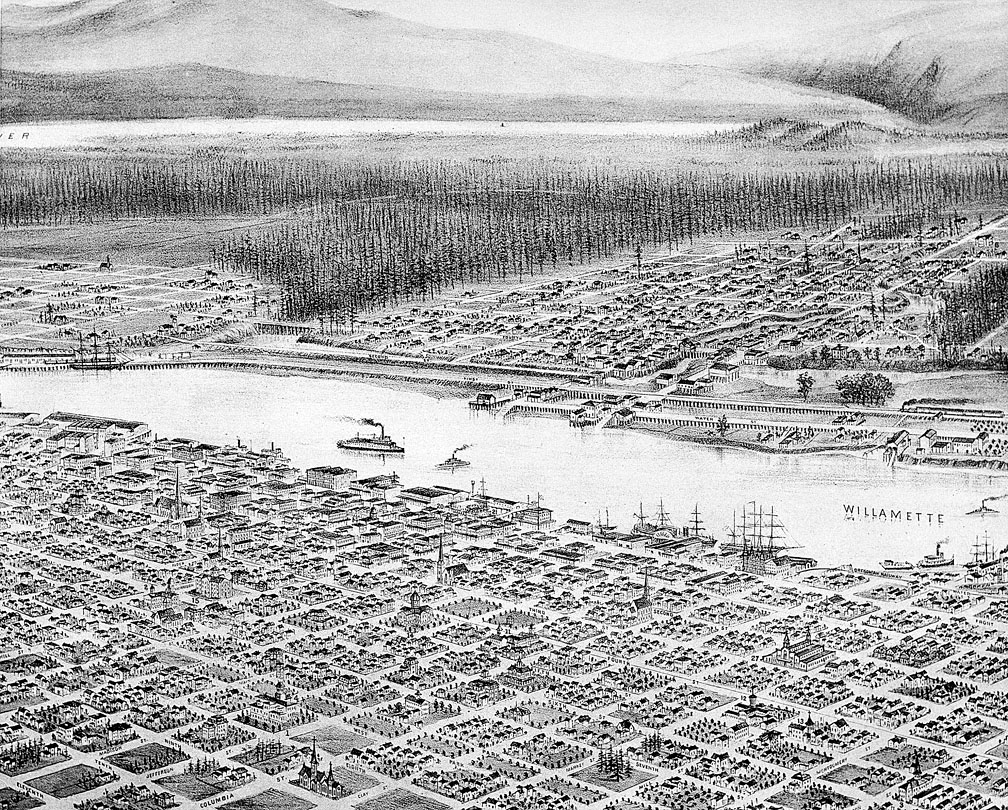- Catalog No. —
- OrHi 11427
- Date —
- 1881
- Era —
- 1881-1920 (Industrialization and Progressive Reform)
- Themes —
- Geography and Places, Transportation and Communication
- Credits —
- Oregon Historical Society
- Regions —
- Portland Metropolitan Willamette Basin
- Author —
- J.K. Gill
Commerce on the Willamette River
The steamboats shown in this 1881 lithograph were a vital part of Portland’s economic life. The discovery of gold in eastern Oregon, Idaho, and Montana in 1860 and 1861 spurred trade on the Columbia and Willamette rivers. The richest California claims had dried up before 1860, and cities as distant as San Francisco and St. Louis tried to compete for the gold dust discovered upriver from Portland.
To ensure their position serving the need of the Inland Empire (as Portland was sometimes referred), local businessmen like John C. Ainsworth, a skilled boatman in his own right, and others incorporated the Oregon Steam Navigation Company in late 1860. Over the next five years, the Oregon Steam Navigation Company and its supporters built portage tramways on the Columbia River and consolidate smaller transportation companies to create a veritable monopoly over rail transportation networks from eastern Oregon to Portland and beyond.
By the time gold production dwindled, wheat grown in the fertile soils of eastern Oregon became a “golden” substitute that continued to draw steamships up the Columbia. From Portland docks, eastern Oregon and Willamette Valley wheat was distributed worldwide. In this respect, this later “gold” strike helped Portland maintain its position as the dominant Northwest shipping center throughout the nineteenth century.
Further Reading:
MacColl, E. Kimbark. Merchants, Money and Power: The Portland Establishment 1843-1913. Portland, Oreg., 1988.
Dodds, Gordon, B. Oregon: A Bicentennial History. Portland, Oreg., 1977.
Written by Trudy Flores, Sarah Griffith, Oregon Historical Society, 2002.
